Around the World in Many Days, I: South West Africa
Namibia is a large country, its roads are poor, and its attractions are far between. Accordingly, travelling to most sites usually requires two days --- one to drive five or six hours straight, covering 200-300 kilometres, to the nearest affordable town or camp (sometimes 50 or more kilometres away), and the next to explore the site itself.
R S
14 chapters
16 Apr 2020
[Namibia] Chapter V: In which a new species of roads, unknown to the calm men, appears in Damaraland
August 21, 2017
|
Damaraland, Namibia, 21-24 August 2017
Namibia is a large country, its roads are poor, and its attractions are far between. Accordingly, travelling to most sites usually requires two days --- one to drive five or six hours straight, covering 200-300 kilometres, to the nearest affordable town or camp (sometimes 50 or more kilometres away), and the next to explore the site itself.
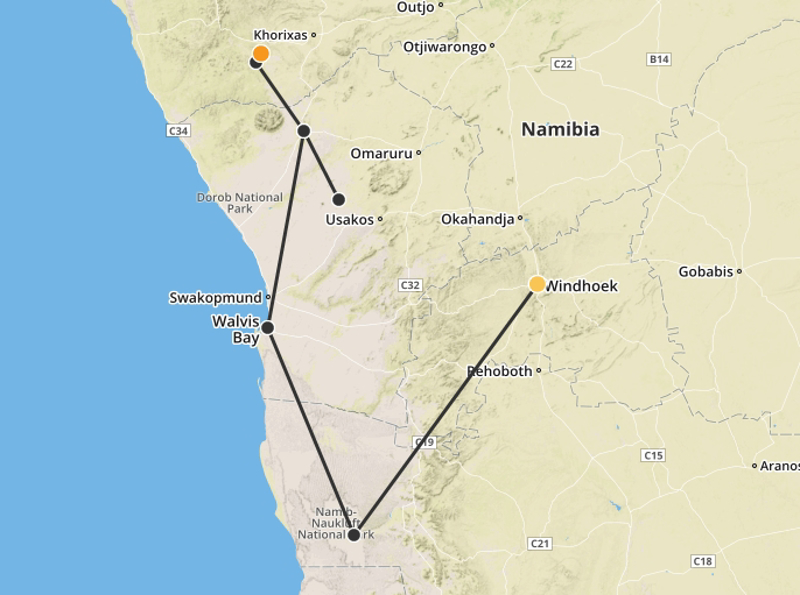
And I have used the term 'roads' above in a most charitable fashion, for the bumpiness of these byways' interminable gravel, especially in Damaraland, was enough to break both hinges on our car's back door within five days of travel --- and our nerves within half that time.
In hindsight, we might not have braved Damaraland's roads had we known their state, and as it was we did somewhat shorten our trip through this dreadfully hot and barren region, but what we did see of it did have its charm, as evidenced by the photos below.
Some of the region's most famous sites (the prehistoric rock art at Spitzkoppe, Brandberg and Twyfelfontein, as well as Petrified Forest) have the added annoyance of requiring all visitors to be accompanied by a compulsory on-site guide. Since we do not favour this custom, we bypassed all these and visited instead the less frequented rock formations that characterise the region (Spitzkkoppe's foothills, Organ Pipes, and Burnt Mountain).
Driving through Damaraland also brought us face to face with a sadder aspect of Namibian tourism, in the form of roadside stalls touting either 'gemstones' (colourful quartzes) --- usually populated by very young children frantically waving their hands at you --- or small handmade trinkets --- often hosted by young Damara or Himba women supposedly performing a local dance, either in colourful dresses and wide-brimmed hats or noticeably bare-chested. Regardless of stall type --- which is often but an extension of a nearby decrepit lean-to made of rusted metal and other bits and ends, presumably their home --- all vendors appear to be extremely desperate to have the rare 4x4 racing by their stall stop and its passengers examine their meagre offerings --- sadly with little success, so it seems. No photos, for obvious reasons.
Accommodations:
- Daureb Isib Campsite, Uis (2 nights; a superb campsite -- we came for one night and stayed for two)
- Aabadi Mountain Camp (1 night; a woefully under-equipped campsite -- we came for two nights and stayed for one)
Photo captions: (a-b) Spitzkoppe and its foothills; (c-e) Spitzkoppe's rock arch; (f) Spitzkoppe's rock pool (looking up from the waterless pool); (g) Spitzkoppe's wildlife (a rock hyrax, locally known as a dassie); (h-i) Organ Pipes; (j) Burnt Mountain
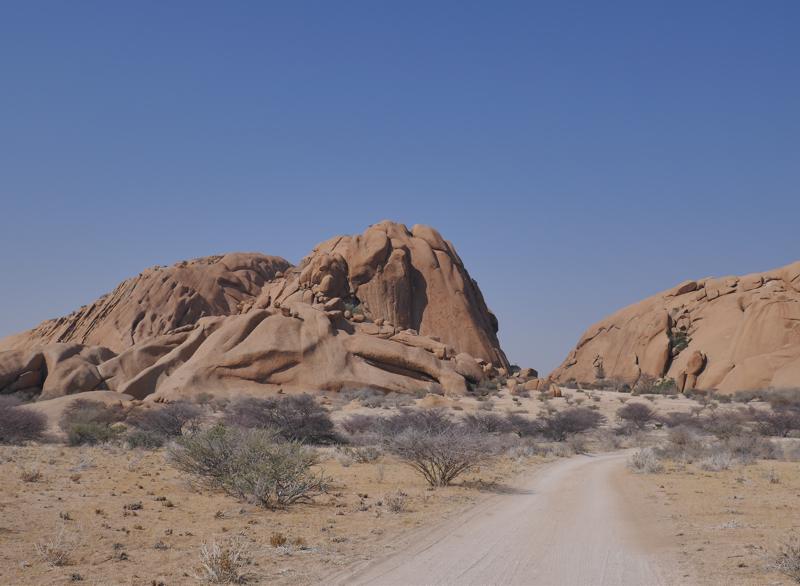
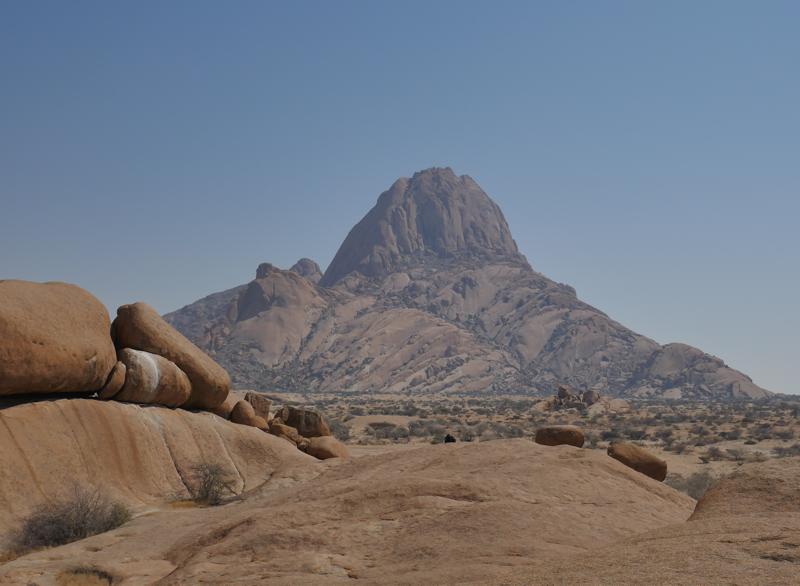
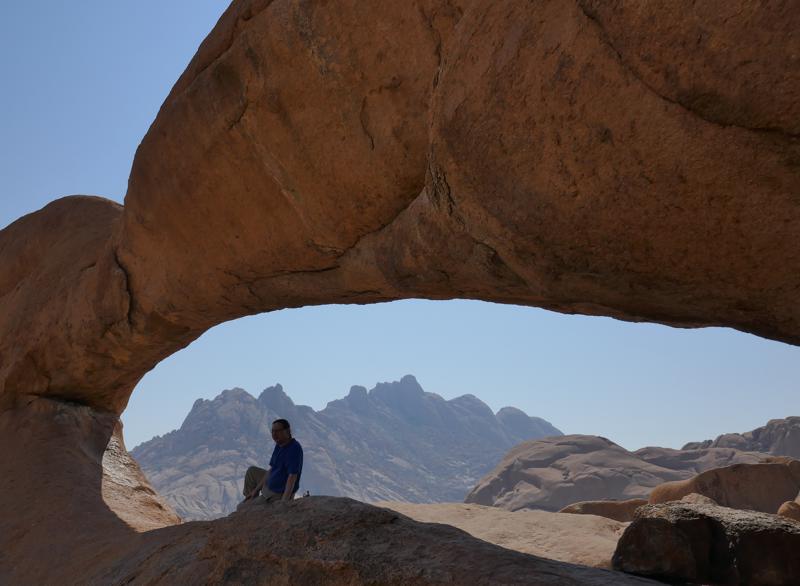
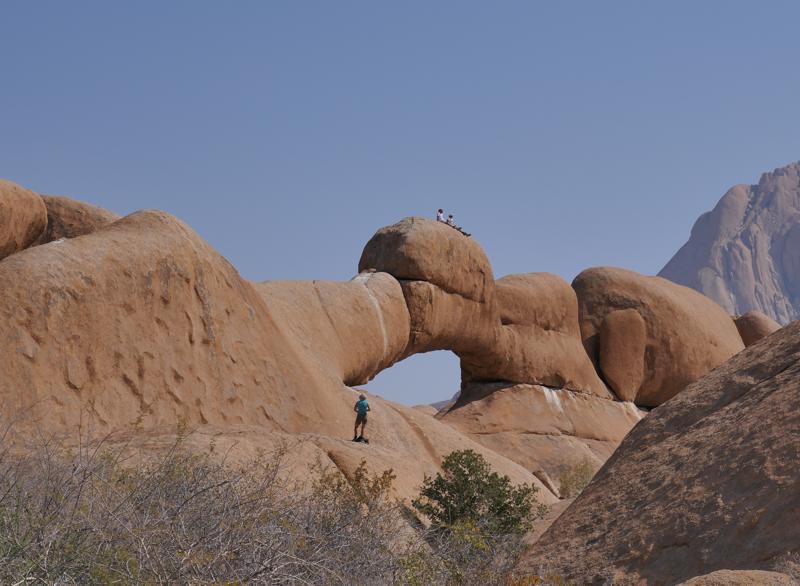
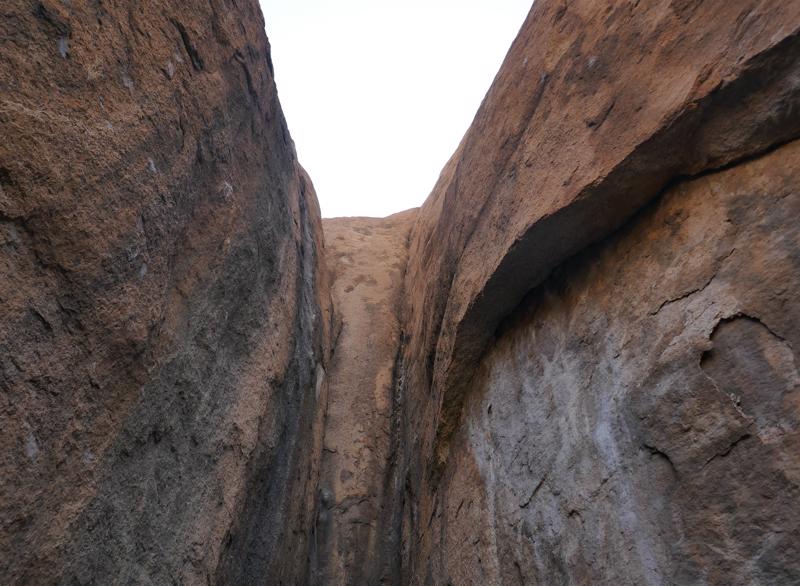
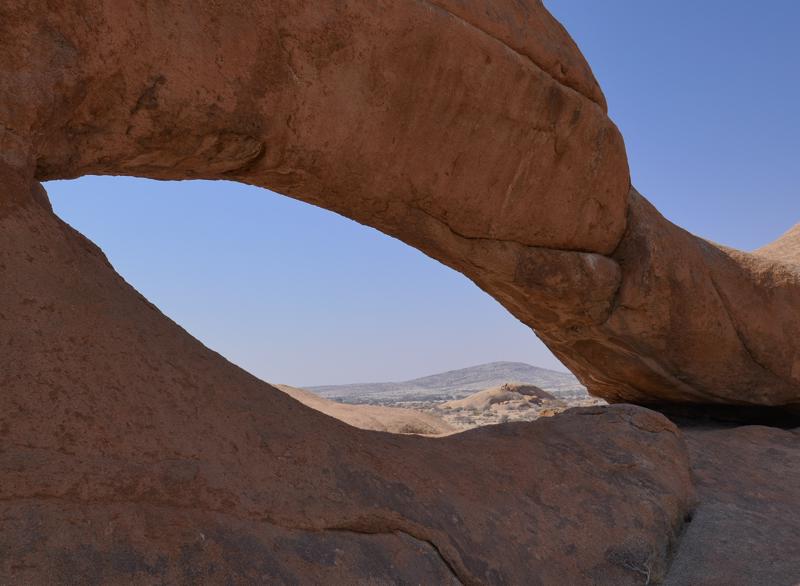
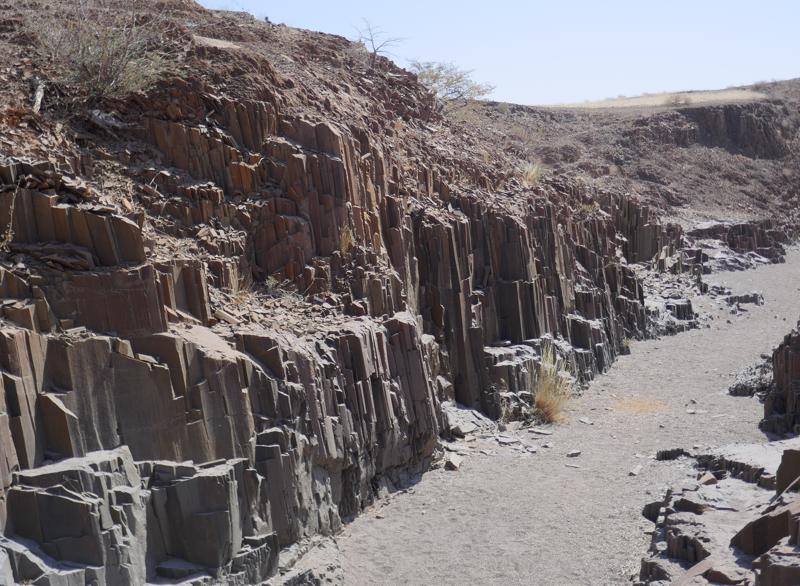
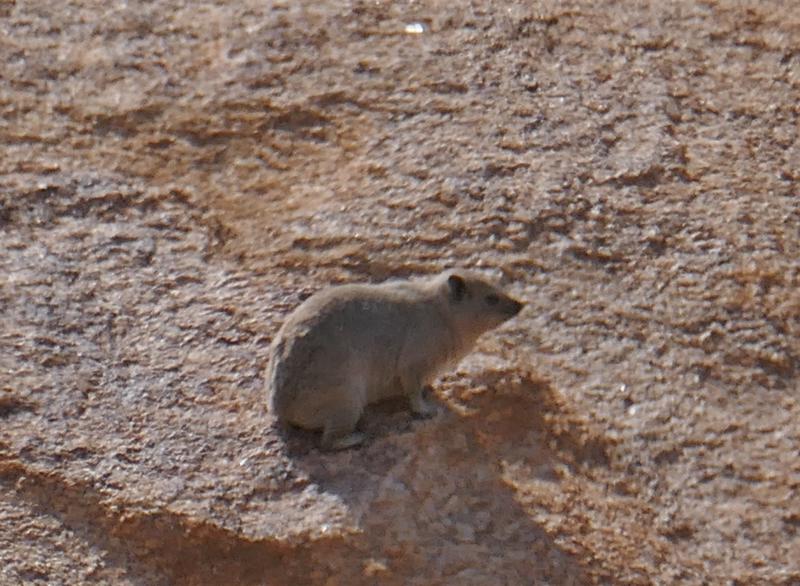
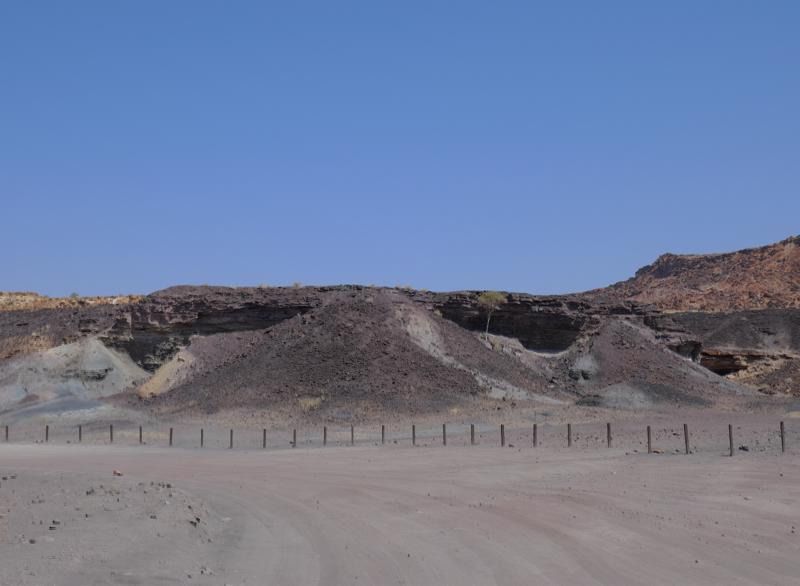

1.
[Namibia] Chapter I: In which N and R kiss each other, the one as woman, the other as man
2.
[Namibia] Chapter II: In which N is unconvinced that she has at last found her ideal diurnal cycle
3.
[Namibia] Chapter III: In which a sandstorm takes place which seems likely to cost no one dear
4.
[Namibia] Chapter IV: In which Walvis Bay astounds us, its pilgrims
5.
[Namibia] Chapter V: In which a new species of roads, unknown to the calm men, appears in Damaraland
6.
[Namibia] Chapter VI: In which we, the travellers, betray a very natural impatience
7.
[Namibia] Chapter VII: Which once more demonstrates the usefulness of water as an aid to eyesight
8.
[Namibia] Chapter VIII: In which N drives rather faster, perhaps, than before
9.
[Namibia] Chapter IX: In which the Kavango and the Mahango prove propitious to our designs
10.
[Namibia] Chapter X: In which we are only too glad to get off with the loss of our air conditioning
11.
[Namibia] Chapter XI: In which N secures a curious means of lodging at a fabulous price
12.
[Botswana] Chapter XII: In which we venture across the Botswana border, and what ensued
13.
[Zimbabwe, Zambia] Chapter XIII: In which N receives a new proof that fortune favours the brave
14.
Summary of Part I and Onwards to Part II
Share your travel adventures like this!
Create your own travel blog in one step
Share with friends and family to follow your journey
Easy set up, no technical knowledge needed and unlimited storage!